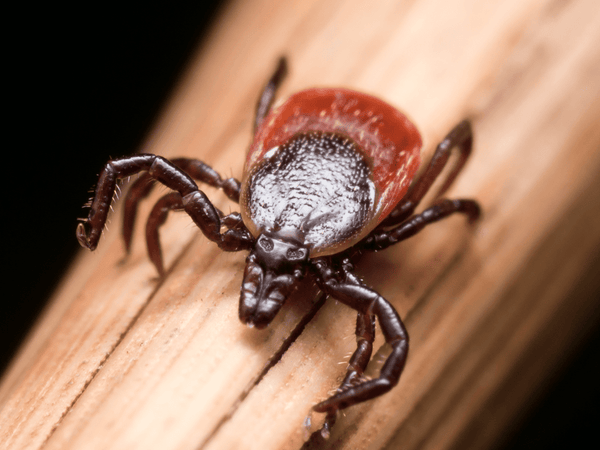Deer Tick

Name of Tick: Deer Tick
Danger Level: Extreme
Nicknames: Blacklegged tick, Bear tick
Scientific Name of Tick: Ixodes scapularis
Habitat: Eastern United States and portions of southern Canada
Note: The Deer tick IS the Eastern Blacklegged tick, same exact tick, we have chosen to make a page dedicated to “deer tick” only because this nickname is so prolific search volume for “Deer tick” dwarfs online inquiries for “Eastern blacklegged tick”. This page exists in the interest in getting all the invaluable tick information we have compiled in as front of as many eyes as possible and saving lives with repellent sales.
Specific Habitat: The Deer tick loves forest; populations are high in wooded areas. The Deer tick lives in grasses, shrubs, and is often dwelling along the edge of trails. The Deer tick can acclimate very easily to just about any environment and their habitat is not limited to dense forest, they can encroach into suburbs, be found in public parks, or backyards, the deer tick is a threat just about anywhere in any state it exists. Hence the name, the Deer tick prolifically targets deer, any area with a deer population is at great risk for infestation. Use caution when traveling any trails formed by deer, it is a virtual guarantee the Deer tick lies in wait.
Tick Facts and Information:
The Deer tick has three life stages, larvae, nymph, and adult. Deer tick larvae are most active during the summer and fall, once they attach to a victim, they will remain embedded and feeding for several days. After larvae are done feeding, they will fall off their host and most, returning the next spring as a nymph. Deer tick nymph hunt most frequently in the warmer months, will remain attached to a host for several days, and transform into adults after a blood meal. Adult deer ticks are most dangerous to human beings from the fall through spring, the females are particularly vicious, male deer ticks do not feed. A female Deer tick can lay a massive bundle of eggs, 2000 or more. One of the most frightening aspects of the Deer tick is its reduced size as compared to other ticks, smaller than most. Deer ticks can be hard to spot and they carry a wide variety of deadly disease. The Deer tick hunts by questing. A bite from the Deer tick can cause debilitating disease and result in death.
Tick Color and Appearance: Most Deer ticks have very dark black legs. The Deer tick, as noted above, is a nickname for the Eastern blacklegged tick, and the black legs are signature feature of this tick. Adult females Deer ticks have a noticeable orange and red body and a black scutum.
Size and Number of Legs: The average adult Deer tick is 1/16 of an inch, size will vary greatly during the tick’s life cycle. Larvae have 6 legs, nymphs and adults have 8 legs.
Diseases Transmitted: Lyme disease, Anaplasmosis, Babesiosis, Deer Tick virus
Control Solution: Tick Proof Repellent
Full Scientific Classification: Kingdom: Animalia, Phylum: Arthropoda, Subphylum: Chelicerata, Class: Arachnida, Subclass: Acari, Superorder: Parasitiformes, Order: Ixodida, Family: Ixodidae, Genus: Ixodes, Species: I. scapularis
